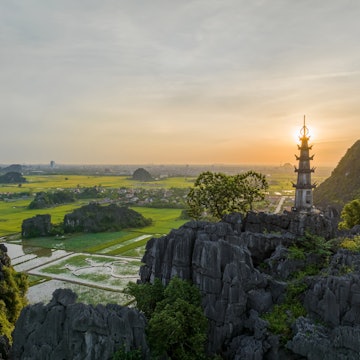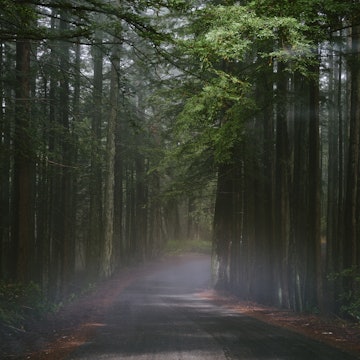

Gniezno Cathedral in Gniezno, Poland. Sandie Kestell/Lonely Planet
When you think about cities in Poland, Poznań most likely doesn't come to mind. But it should because this city equidistant from Warsaw and Berlin will steal your heart. History is everywhere in Poland’s fifth-largest city, and you can get up close to the story of how the Polish state began 1000 years ago. There’s also fascinating 20th-century history to dive into, a lovely town square, leafy parks to lounge in, and an exciting food scene with casual to high-end dining options. The city also makes an excellent base to make several day trips into the rest of the province of Wielkopolska, with Gniezno, Rogalin Palace and Wielkopolska National Park all a short car, train or bus ride away.
Here’s my guide to getting the best out of Poznań and its surroundings, from Enigma code breaking and St Martin’s croissant-making right through to first kings and their coronations and beloved forest trails.
When to arrive: Arrive on a Wednesday and make an extra long weekend of your visit. Summer is actually something of a quiet season in Poznań, as the city has a busy trade fair schedule through the rest of the year.
How to get from the airport: Poznań Airport is around 20 minutes outside of the city. Order a taxi into the city using local rideshare app Bolt.
Getting around: Poznań is a walkable city, but there’s also a solid tram network. A car is handy to get around Wielkopolska, but you can get around the region without one. Poznań has regular, fast rail connections to Gniezno and rail links to towns like Mosina and Puszczykowo bring you to the doorstep of Wielkopolska National Park.
Where to stay: The city has dozens of options. Since most sights are clustered around the Old Town, you should aim to stay in this area. Hotel Atlus Poznań has a central location on Święty Marcin, just over five minutes from the Old Market Square. Rooms are spacious and designed in a modernist style. Nearby, the sleek Hotel DeSilva Premium Poznań is another solid option. If you plan to stay overnight in Gniezno, the ibis Styles Gniezno Stare Miasto is a reliable option in a good location.
What to pack: Pack light layers for summer, walking shoes if you plan on visiting Wielkopolska National Park, and sunscreen. Polish winters are cold, so you’ll need heavier layers, a good winter coat and sturdy shoes.
What to plan in advance: Book your experience at the Poznań Croissant Museum. Shows run at 2pm daily during July and August but only on Saturday and Sunday the rest of the year. Also consider buying a Poznań City Card to get free or discounted entry to many museums and tourist attractions as well as free travel on public transport.
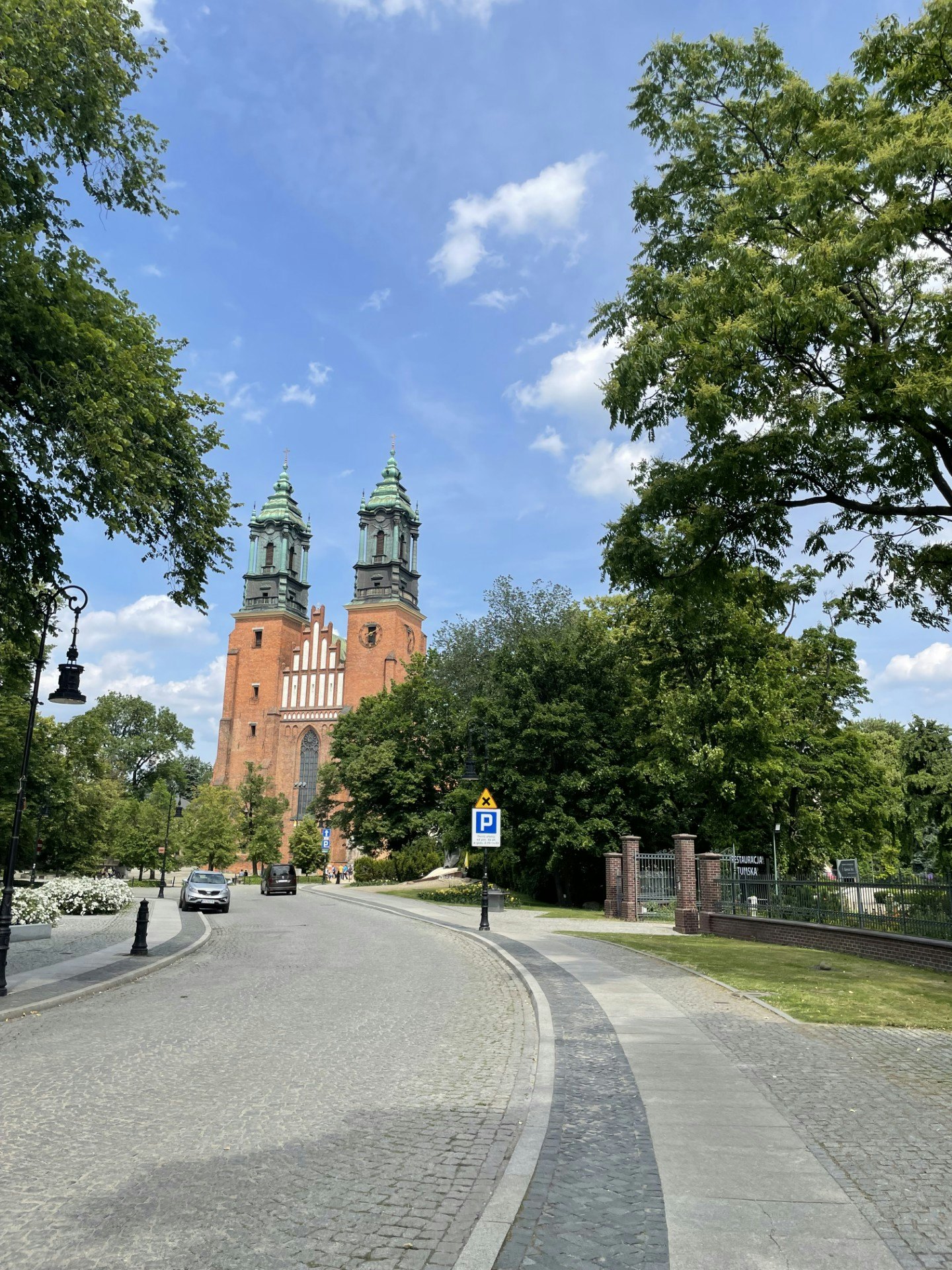
Day 1: A walking tour of Poznań
How to spend the day: Make your way to Plac Kolegiacki, a quiet square that’s just a few streets from the Old Market Square (Stary Rynek). Pop into Hotel Kolegiacki and take the elevator to the third floor to its little-known rooftop cafe where you can enjoy coffee with your first views over the city. To really get your bearings though, take a walking tour. Visit Poznań can organize guides.
My tour started on Plac Kolegiacki, which was once the site of the Collegiate Church of St Mary Magdalene, now long gone. But the square’s conversion from a car park into the peaceful square it is today led to the discovery of numerous archaeological objects. Several glass viewing platforms were constructed to expose the underground foundations. Before moving on from the square, don’t miss the sculpture of the two goats, Pyrek and Tyrek, squaring up to clash horns. You’ll see this pair again before the day is over.
Next, pass by the Parish Church and stroll into the bustling Old Market Square, filled with cafes and outdoor tables in summer. Admire the reconstructed gothic, classical and baroque buildings as well as the Renaissance Town Hall. At noon every day, Pyrek and Tyrek emerge from a small set of doors in the town hall’s tower above the clock to clash horns 12 times, much to the delight of onlookers below. The story goes that the goats were actually a last-minute addition to the menu for a fancy banquet to unveil the new clock on the tower, but they dodged the butcher’s knife and made a hasty escape attempt. With all the excitement, they ended up climbing straight up the tower and clashed horns when they came out above the clock. The banquet guests were charmed and a mechanical pair of goats was built into the tower for people to enjoy every day at noon.
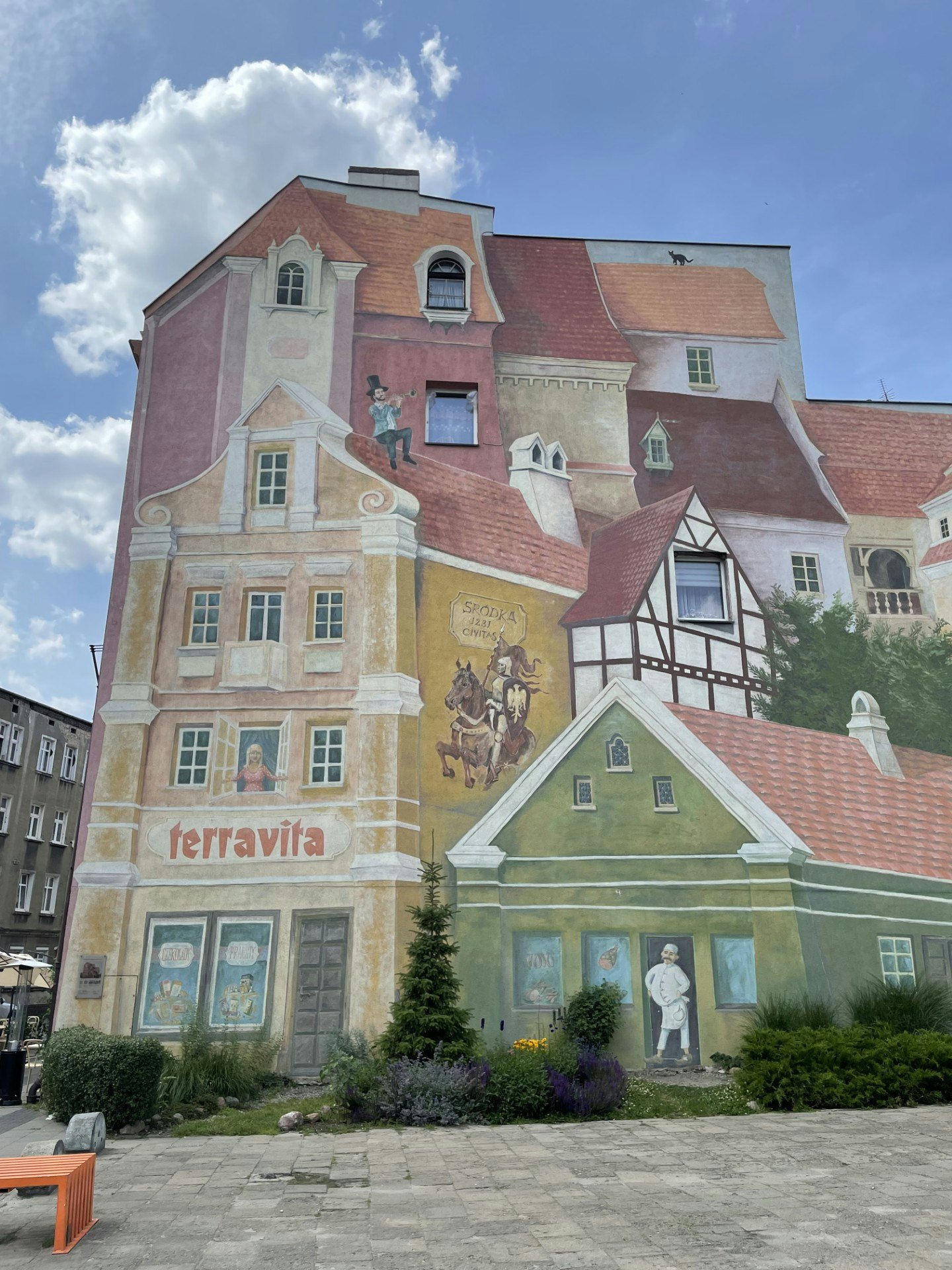
Head to HP Cukiernia Hanna Piskorska bakery to grab a rogal świętomarciński (St Martin’s croissant) – the city’s unique pastry with protected status. Only a few bakeries are certified to sell it. Nibble on your pastry as you walk to the castle, which was formerly the royal palace and is now home to the Museum of Applied Arts. Take the elevator to the observation deck for a panorama of Poznań before browsing the museum’s collection.
From here, turn your back on the Old Town and head to Cathedral Island to explore Poznań Cathedral, which dates back to the end of the 10th century and the original settlement here. This was Poland’s first cathedral, though the building you see today is the fifth iteration of the cathedral, most recently reconstructed after WWII. This is also where the foundations of the Polish state were built. Inside, look for the Golden Chapel, where there are the tombs of the first Polish king, Bolesław the Brave, and his father, Mieszko I, Duke of Poland.
Move now into the Śródka district where you’ll find an enormous mural depicting a town scene with delightful details. (Spot the black cat!) For lunch, grab an outdoor table at Hyćka Restauracja, which serves up a menu full of Polish cuisine like duck with yeast dumplings and red cabbage or the wild boar pierogi. If you’re feeling adventurous, try the traditional czernina soup made with duck blood and dried fruit.
After a late lunch, backtrack past the cathedral to Porta Posnania. This heritage interpretation center offers an audio tour covering the story of Cathedral Island and how the Polish state began and grew.
Where to eat: The picturesque Old Market Square has dozens of restaurants with outdoor tables to soak up the atmosphere and people watch. Try Brovaria for regional dishes featuring sauces prepared with freshly brewed beer from the in-house brewery.


Day 2: Crack codes at the Enigma Cipher Centre
How to spend the day: Head straight to the Enigma Cipher Centre. A self-guided audio tour of the exhibition presents cryptography through the ages before delving into the history of the Enigma machine used by the Germans during WWII and outlining how three mathematics graduates from the University of Poznań – Marian Rejewski, Henryk Zygalski and Jerzy Różycki – cracked the code in the 1930s. There are dozens of opportunities to test yourself by attempting to solve ciphers. Prepare to spend three-plus hours here.
For lunch, potato enthusiasts will love Pyra Bar. If I lived in Poznań, I would eat here all the time. The menu is packed with potato dumplings, casseroles, pancakes and baked potatoes, to name but a few. Try the Pyry z bzikiem (baked potato with cottage cheese and red onion) for a classic comfort dish from the regional specials.
Next up, walk or grab a tram to Citadel Park for the afternoon. The park was a large Prussian fortress, but it’s now a place to stroll, people-watch and enjoy statues like the headless Unrecognized cast iron figures and various monuments, including some from the Soviet era. Stop at Niebiańska Herbaciarnio Zielarnia Cafe for refreshments and ice cream. There are several cemeteries on the slopes of the park, including a particularly interesting one for WWII history buffs: the Commonwealth Cemetery that contains the graves of several servicemen who took part in the “Great Escape”– the mass escape from the Stalag Luft III German POW camp in the Polish city of Żagań in March 1944.
Where to eat: For dinner, book a table at Fromażeria, awarded a Michelin Bib Gourmand designation in 2024. This is Poland’s first restaurant with a cheese bar, so definitely order a cheese flight as your starter. These come with three to four cheeses and are paired with wines, beers or spirits to complement the flavors, all presented on a charming cheese caddy. The restaurant’s down-to-earth vibe makes it all the more enjoyable.
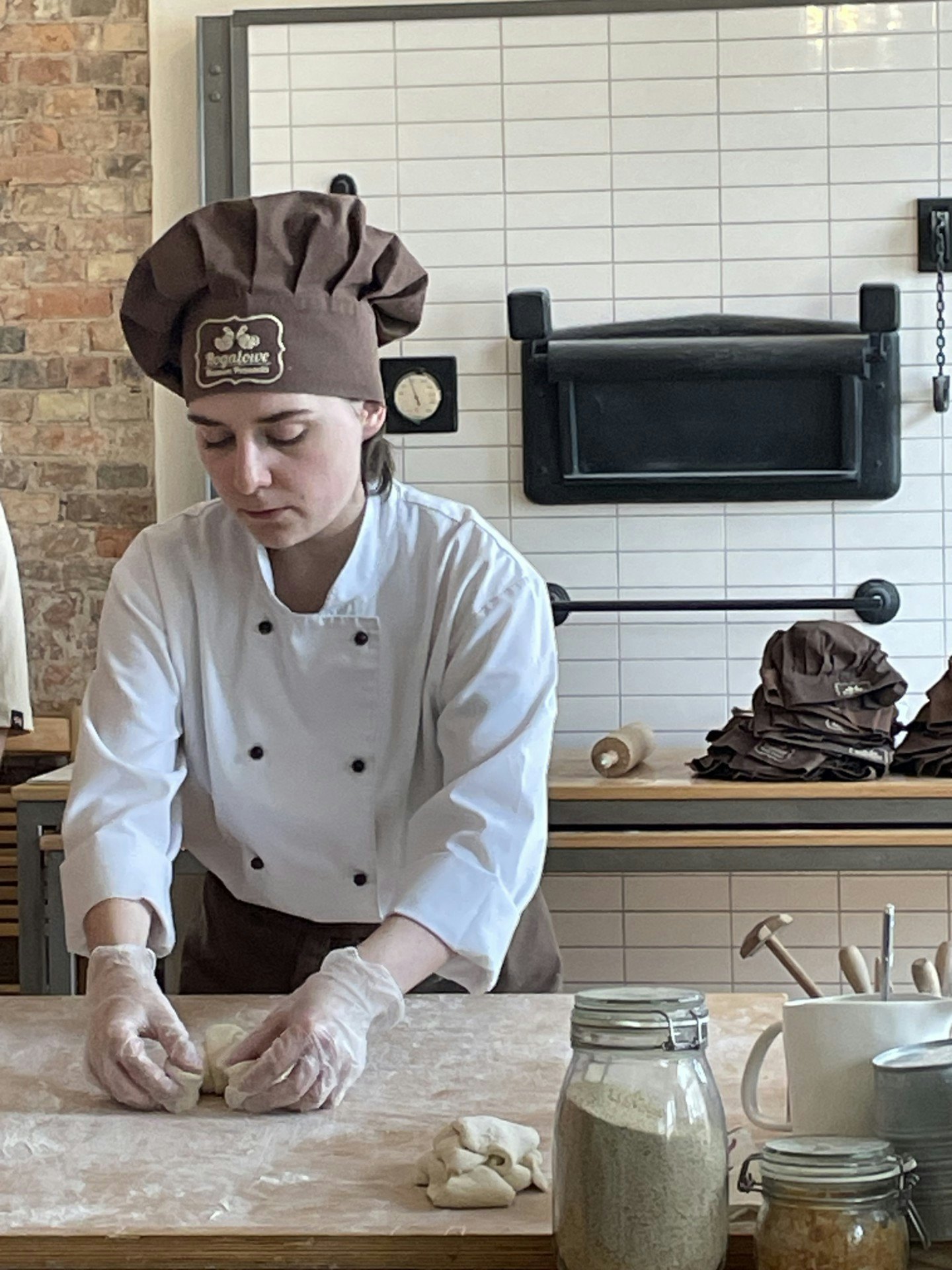
Day 3: Participate in a baking show at the Poznań Croissant Museum
How to spend the day: Make your way to the small Museum of the Poznań Uprising - June 1956 to step back to the Soviet era and learn about the 1956 industrial workers' strike that turned into a massive protest in favor of improved living standards and working conditions. The strike was soon suppressed with force and violence by the regime and many were killed, injured and arrested. Information panels and audio points mostly contain English translations, but some video material is in Polish only. Walk to nearby Plac Mickiewicza to look at the striking Monument to the Victims of June 1956. It’s made up of two enormous crosses tied together and is a lasting symbol of anti-communist opposition. Before leaving this part of town, visit the Kaiser’s Castle, built in the early 20th century for German Emperor Wilhelm II.
Now head back to the Old Town and a stop at the the Museum of Musical Instruments, where you’ll see an enormous collection of instruments, well organized by era and continent. One of the standouts is a harpsichord played by a young Mozart. Grab lunch at Republika Róż by Andrzej Gołąbek on Plac Kolegiacki. The menu is seasonal and offers plenty of Polish dishes. If it’s on the menu at the time of your visit, order the roasted young cabbage for probably the best cabbage dish you’ll ever have.
After lunch, it’s time for a real treat – but you’ll need to book this ahead to secure a spot and an English-language show. You already know about Poznań’s legendary St Martin’s croissants. Well, the Poznań Croissant Museum takes you through the history of the pastry and shows how the pastry is made in a live demonstration. Be sure to volunteer when the master baker starts the show. You’ll be kitted out with an apron and baker's cap and called up to get hands-on, perhaps kneading the dough, rolling it out, cutting it with the traditional utensil (this is quite something) or even shaping the pastry into its final horseshoe shape. It’s a fun show, the bakers bring the history to life, and there’s a sample for everyone at the end.
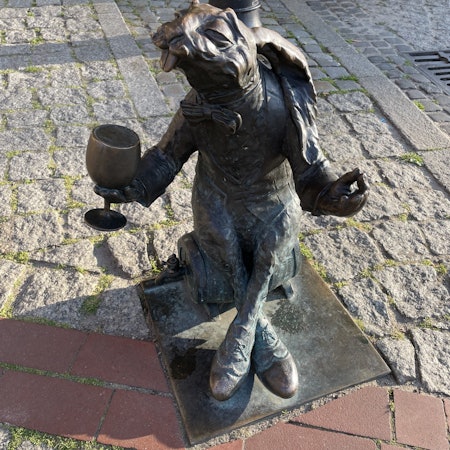
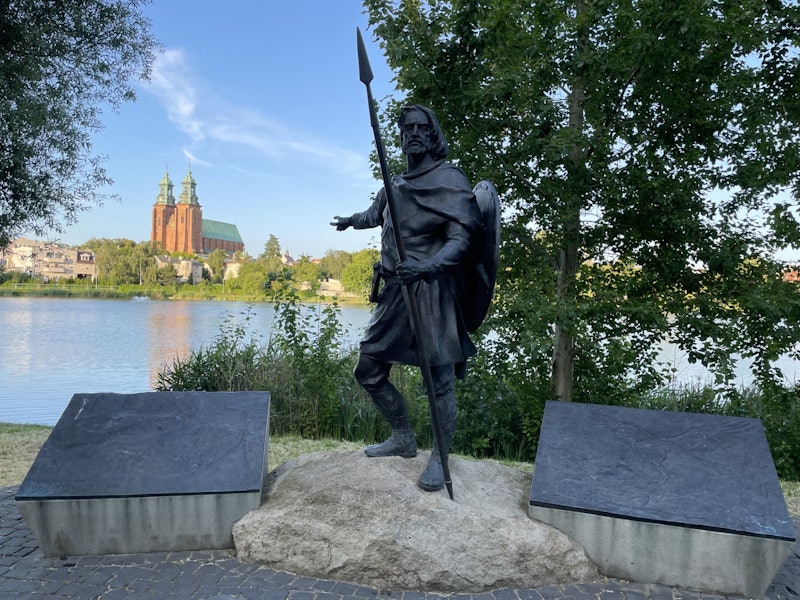
Next it’s time to get out of the city. Head northeast to the Zielonka Forest by car, or take the bus to the village of Czerwonak and walk 20 minutes into the forest. You’re heading for the Dziewicza Góra Observation Tower. Climb the 150 steps for a panorama over the flat, forested landscape. To delve deeper into the forest, try driving the trail of the forest’s 12 wooden churches, where each one is in a different style and the oldest is over 500 years old. Or just stop at one for a closer look, like the 16th-century Church of St Nicholas in Wierzenica.
Continue on now to Gniezno, the legendary first capital of Poland and just an hour by train from Poznań, making it a perfect day or overnight trip. Spend the evening following the Royal Trail to start delving into the city’s history. The trail is made up of statues and sculptures of key figures in Gniezno and Poland’s history, including King Bolesław the Brave and Lech, legendary founder of Gniezno and Poland. What makes this trail stand out most are the 15 bronze rabbit sculptures depicting key historical events and figures important to the city’s history, from a Prussian Soldier rabbit ready for battle to the Liqueur Taster rabbit looking a little tipsy right through to a Bricklayer rabbit hard at work and a Scribe rabbit taking notes. More rabbits are to be added to the collection, but why rabbits? They were chosen for the trail because the Polish word for king (król) sounds a lot like the word for rabbit (królic). Download the free Królika GOń (Rabbit Chase) app to follow the route and learn more about the individual sculptures.
Where to eat: Sip a craft beer and order a burger at restaurant brewery Dobry Browar. Order a beer at the bar or opt for a card to use at the pour-your-own wall of beer taps. Book ahead to secure a table, particularly on weekends.
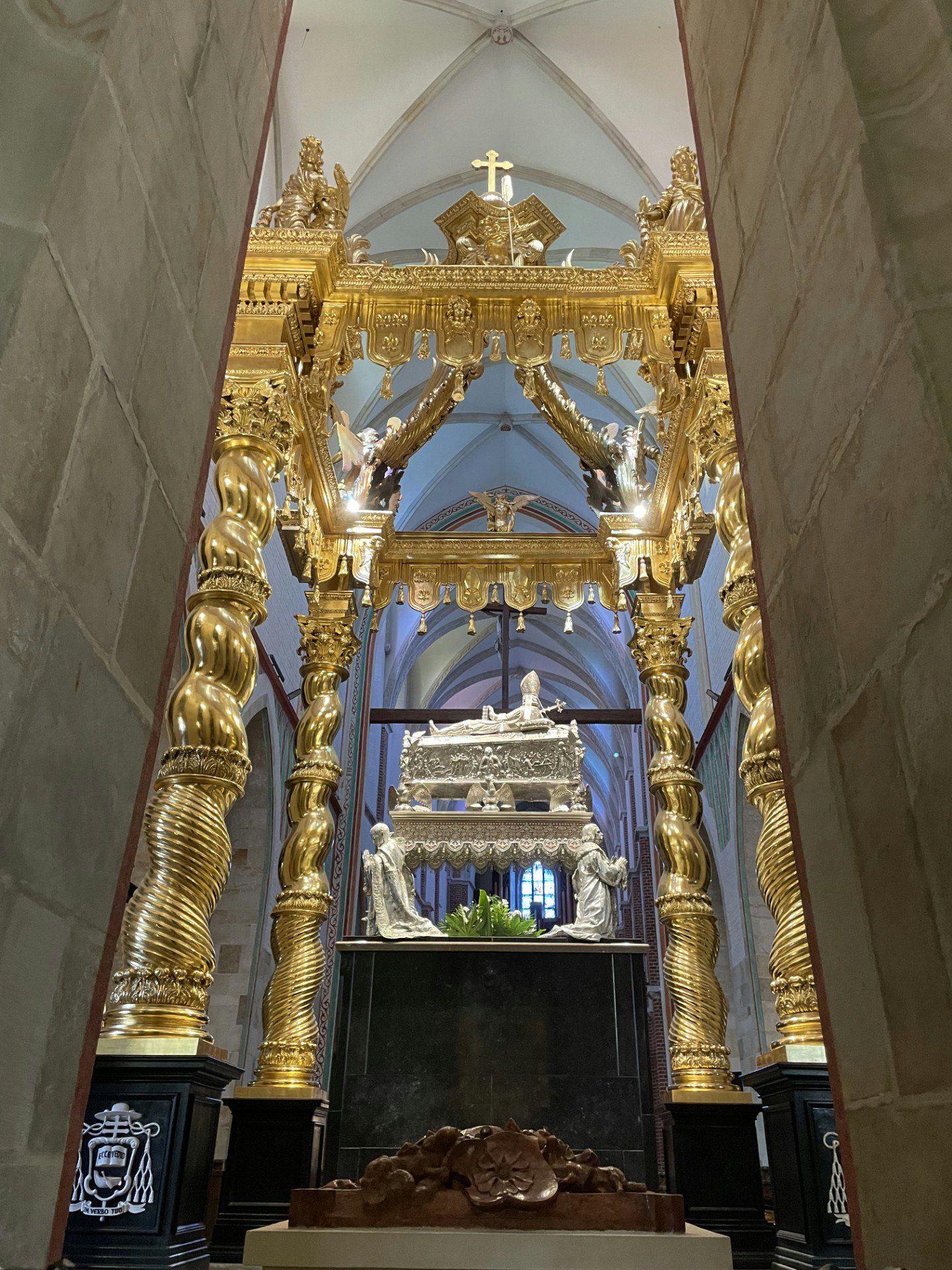
Day 4: Take time to take in Gniezno
How to spend the day: Gniezno Cathedral is over 1000 years old and the city’s biggest attraction. It’s best to visit with a guide or take the audio tour. Rebuilt several times, most recently after WWII, the cathedral was the crowning place of the first kings of Poland – Bolesław the Brave in 1025 and his son Mieszko II Lambert just six months later still in 1025. The next 300 years saw another three Polish kings crowned here. The most precious parts of the cathedral are the silver tomb of St Adalbert, the patron saint of Poland, as well as the Gniezno Doors, which show the story of Adalbert’s life in 18 incredibly detailed panels. These are the only surviving doors in Europe that depict a modern saint and are estimated to be around 850 years old. The cathedral museum has an excellent replica if you want to spend longer parsing the story and admiring the piece, which a guide described as almost like an early comic strip. Take a quick tour of the crypt (entry every 30 minutes). Don’t be put off by the concrete ceiling put in during the reconstruction after WWII; the crypt contains many original elements. Look for the oldest surviving inscription in Poland, which dates to around 1003-1004. Round out the visit by climbing the tower for glorious views over Gniezno. If you need a coffee stop before leaving Gniezno, choose trendy Cud Cafe.
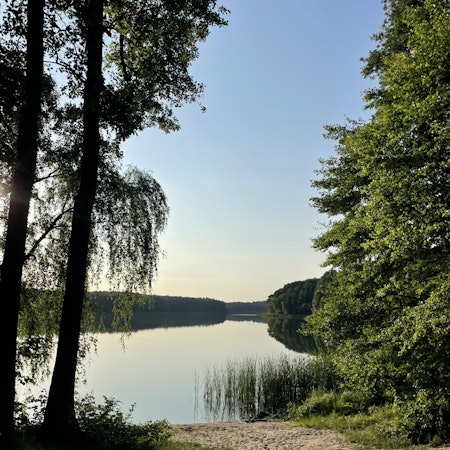

Next, head to Rogalin Palace Museum. From Gniezno it’s a 45-minute drive. It’s not the easiest place to get to from Poznań; you’ll need to take the train first and then a bus or taxi. Built in the 1770s in the late baroque style, this was the mansion complex of the Raczyński family. The interiors have been expertly reconstructed and audio tours lead through the palace room by room every half hour, with stories about the palace’s history as well as insights into the lives of the Raczyński family. Don’t miss walking the gardens and grounds, covered with around 1500 monumental oak trees. If you’re tight on time, make your way straight to the most famous oaks – named Lech, Czech and Rus after the legendary brothers credited with founding Poland, Czechia and Russia – which are around 700 years old. Next visit the gallery to browse and admire Polish and European paintings, with the star here being Jan Matejko’s truly enormous and incredibly detailed Joan of Arc.
Where to eat: There’s an excellent cafe at the palace complex, but avoid those in the very direct surroundings that generally cater to bus tours. For somewhere special, head to Lokomotywa in nearby Puszczykowo for an early dinner. This restaurant in an old train station places a real focus on bio ingredients. Try one of the savoury tarts and pick up some homemade biscuits for the road.
How to spend the evening: If you’re here in summer, the days are long and late afternoon/early evening is the best time to go for a hike when temperatures are cooler. Both Rogalin and Puszczykowo are on the doorstep of Wielkopolska National Park. Set out on the trail that skirts the shore of Jezioro Góreckie lake. From the car park beside the Muzeum Przyrodnicze WPN natural history museum, it’s around 8km (5 miles) out and back as far as the vantage point looking out to the castle ruins on the island in the lake. Expect mixed forest, a mostly flat trail alongside the lake and the sounds of frogs croaking, birds singing and woodpeckers tapping. If you’re coming from Poznań without a car, you can access this part of the national park by taking a train to Mosina (under 20 minutes one way) and walking through town before joining a trail in the park.
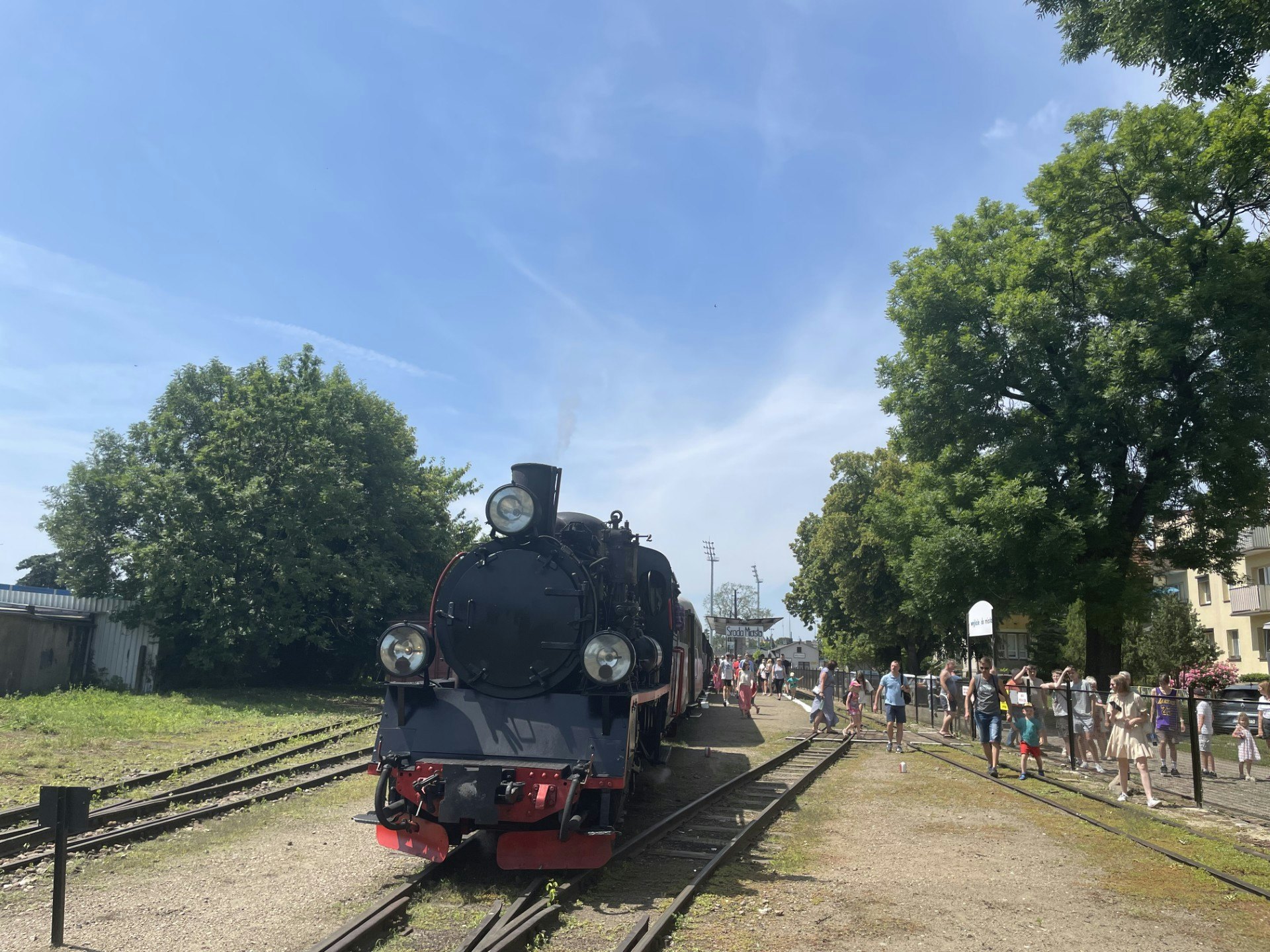
Day 5: Ride the railway in Środa Wielkopolska
How to spend the day: Take another day trip outside Poznań, this time to Środa Wielkopolska to ride the narrow gauge railway. Catch a morning train to Środa Wielkopolska and walk the short distance to Środa Miasto station. The 14km (8.6 miles) stretch of line running from here to Zaniemyśl was built in 1910 and is the only remaining part of what was once a much larger network serving the region. Originally carrying both freight and passengers, it operated until 2001.
Rail enthusiasts have carefully restored two steam locomotives and one diesel to keep the line going, and locals are proud of the railway. Climb aboard and grab a bench in one of the open carriages and enjoy the hourlong journey to the end of the line in Zaniemyśl (check schedules in advance). Once the train passes the sugar factory complex beside the station you’re out in the country, chugging past meadows and farmers’ fields. When you pull into Zaniemyśl, pop into the station building to look at the old maps and rail memorabilia, and the station also sells a small selection of refreshments. Lunch at Kropka Cafe & Bistro in Zaniemyśl before catching the narrow gauge back to Środa Wielkopolska.
Sandie visited Poznań as a guest of the Polish National Tourist Office. Lonely Planet does not accept freebies in exchange for positive coverage.





